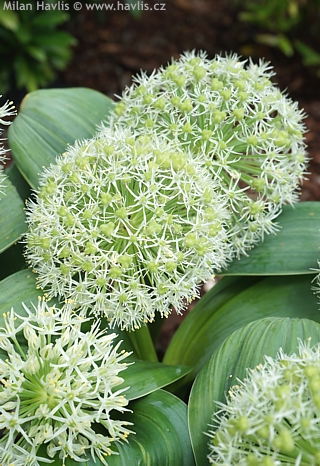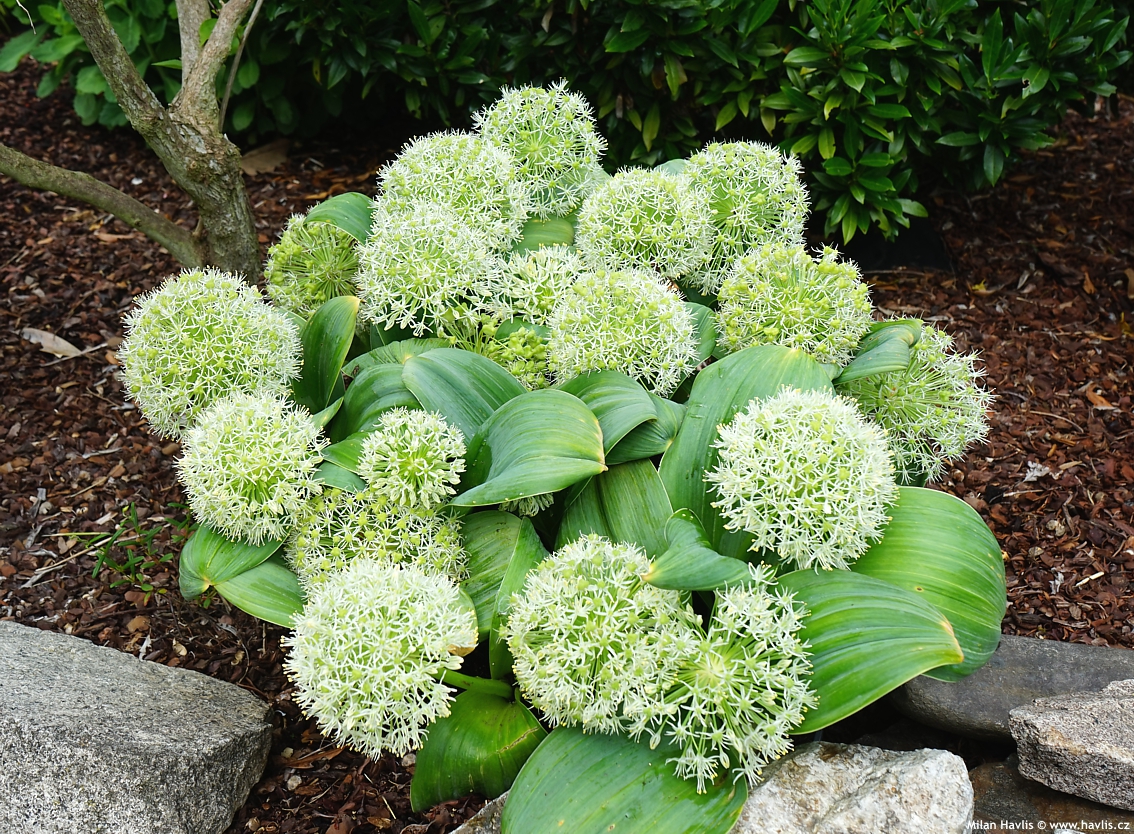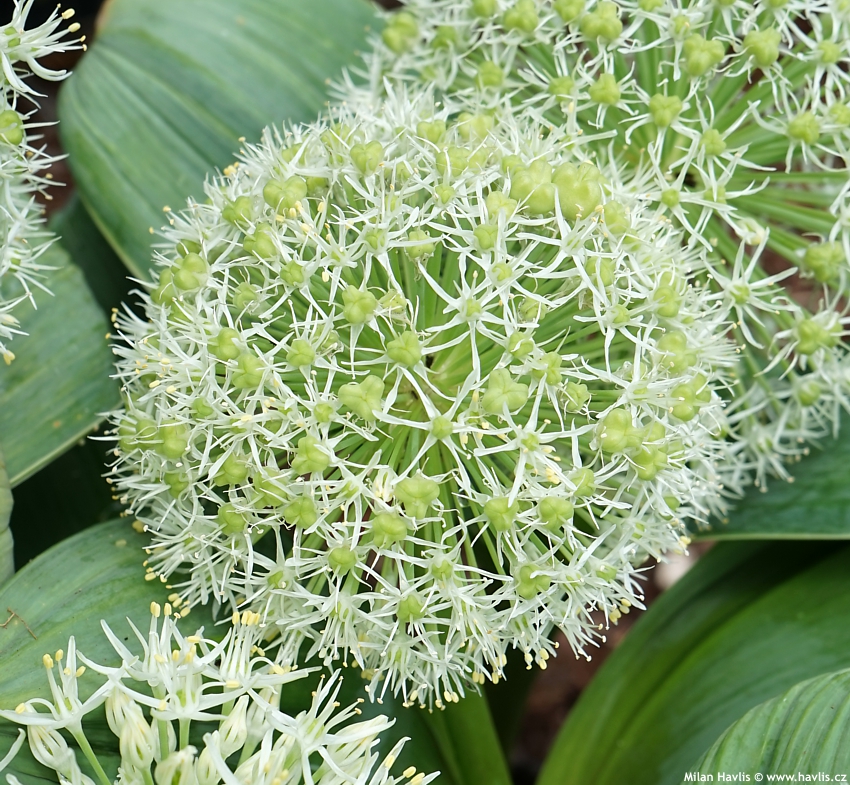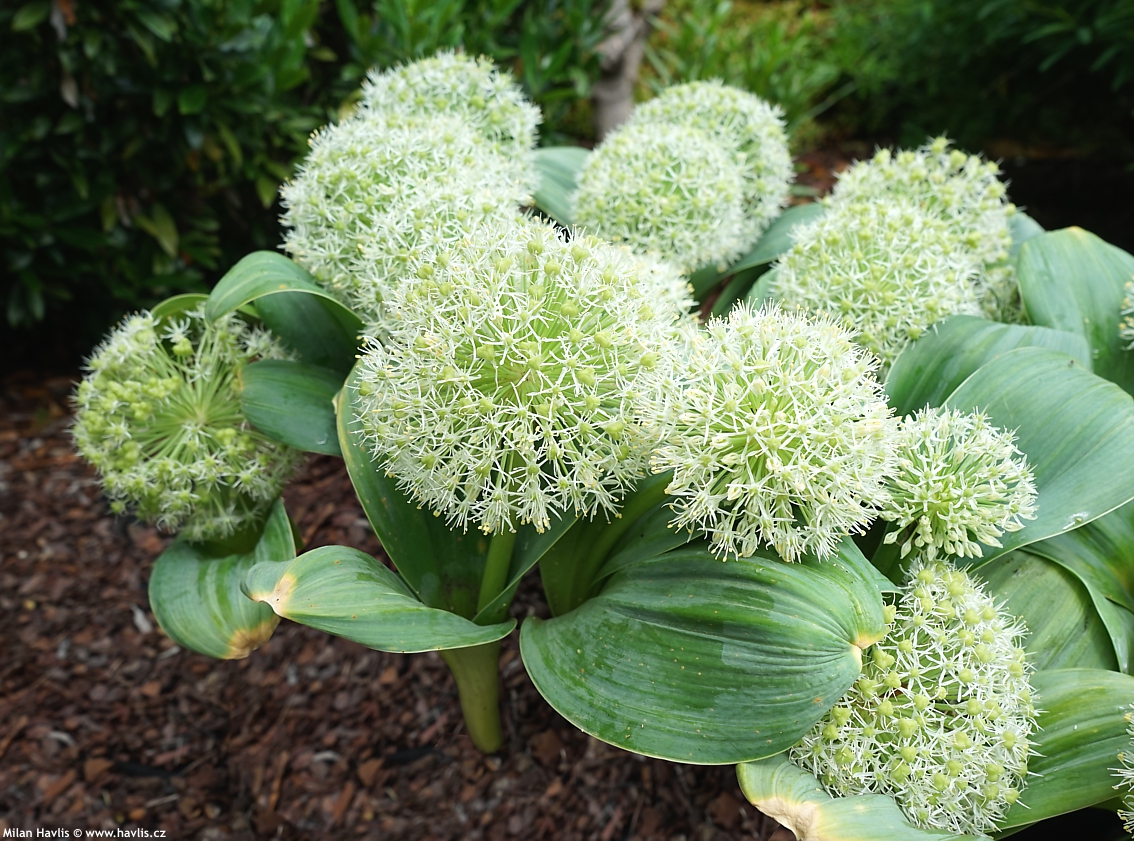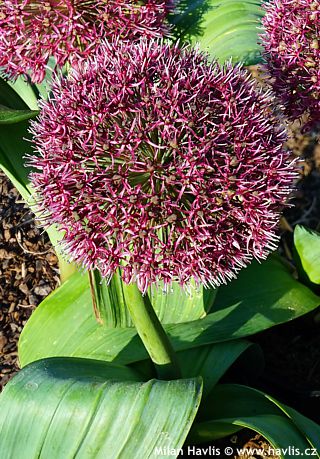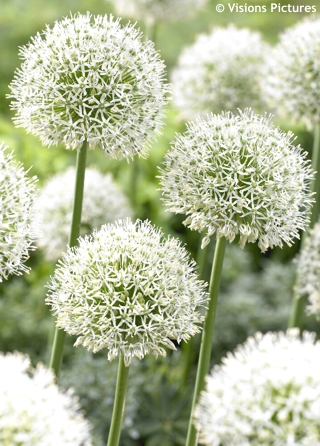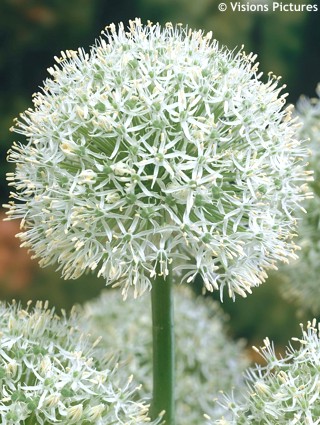Allium karataviense 'IVORY QUEEN' Turkestan onion
size/type
low perennial,low perennial
usual height
0,1-0,2m
usual width
0,2-0,3m
leaves
deciduous broadleaf
colour of leaves
flowers
showy
colour of flowers
blooming time
June
location
full sun
USDA zone (lowest)
5 (down to -29°C)
winter protection
for zone 5+6

for zone 7

categorized
Allium
Ornamental onion is an attractive bulbous perennial commonly found all around mountainous regions of northern hemisphere. Most sought-after varieties are those with huge globular inflorescence in mid spring, yet there are others that bloom in the middle of summer offering handsome foliage all season round.Description of the plant:
If you know and like large-flowered ornamental onion with blue flowers on tall stems, this little boy will take you by surprise. Turkestan onion is its short growing brother from Karatau (Black Mountain) in southern part of Kazachstan, Central Asia. The species produces pale pink, less conspicuous flowers but Ivory Queen is variety with pure white, star-shaped flowers composed in large, 8-12 cm across, globular inflorescence on the background of attractive foliage. Its leaves are blue green with silvery icing, 12-15 long, 6-8 cm wide. They die back soon after flowering and may be removed or left in situ if their unsightly state is not irritating. Stems are commonly 10-15 cm tall, in very fertile soil may reach up to 25 cm. As the production of seeds exhausts the plant the stems are best cut off just after flowering – plants reproduce by roots/bulbs. Large flowered ornamental onions need very well-drained soil or sand-based loam, and location in full sun. Avoid soils that remain wet especially when the plant is dormant. Should you have no other choice dig up the plant in midsummer, and plant it in a pot that is kept away from excess rain until early spring when it can be transplanted to the ground again, now with new roots that developed in the pot during dormancy. The bulb should be at least 5 cm or better 10 cm below the ground level. The stems are strong enough to withstand common weather caprices, however, open and exposed locations (windy seaside, large open fields, smooth mountain slopes etc.) are not recommended. In spite of the garlic/onion smell no part of the plant is edible. This one is rated hardy to min. -29 °C (USDA zone 5) but will very probably take stronger frost.
Last update 31-12-2020
QUICK PRICE OVERVIEW
CURRENTLY SOLD OUT
WANT TO TRY A SIMILAR PLANT?












